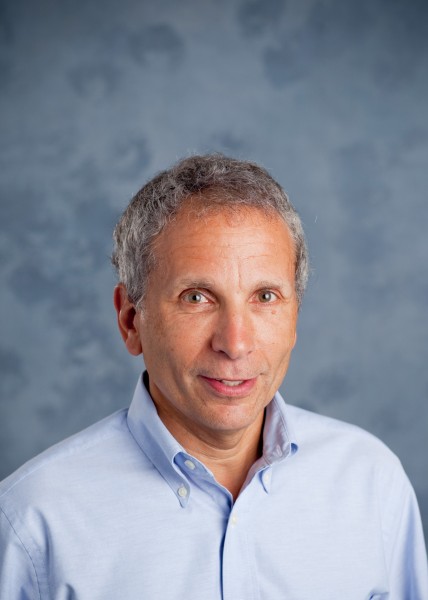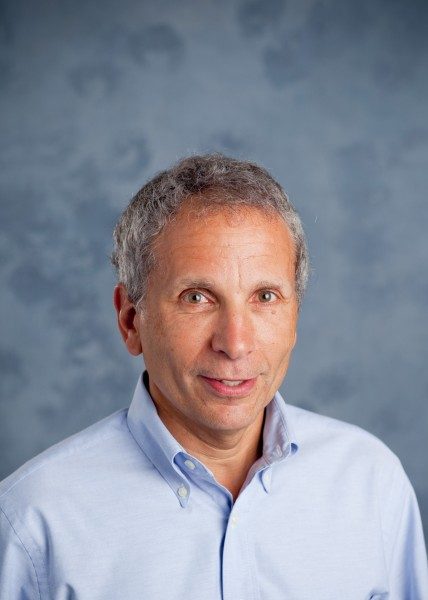
04 Feb To Your Health: What You Should Know About Coronavirus!
Dr. Alan Safdi, a world-renowned internist and gastroenterologist with encyclopedic knowledge of mind-body wellness and preventative medicine, posts on Telluride Inside… and Out under the banner of “To Your Health.” His blogs feature the most current information in his field: health, wellness, and longevity.
Winter and summer 2020, Dr. Alan is offering 14 seminars to medical professionals. The general public is welcome. Also this summer, he returns with his popular Live Longer Retreat wellness intensives. For all programs, go to his Telluride Longevity Institute website or sign up by calling 1-877-448-5416.
This week, Dr. Alan talks about what everyone should know about the coronavirus.

An electron microscopic image of the 2019 novel coronavirus grown in cells at the University of Hong Kong. Source: The University of Hong Kong, courtesy Bloomberg.com.
An unusual outbreak of pneumonia in China in December presented a medical mystery that may have been solved with the identification of a never-before-seen coronavirus, now known as the 2019 novel coronavirus—but many more questions are yet to be answered.
As doctors, epidemiologists, and medical researchers work to learn more about the new coronavirus, including such basic questions as how dangerous it is, how it spreads, and how it should be treated, people are understandably on edge because the illness has caused a considerable number of deaths. And it is moving quickly around the world, having already been identified in patients in Japan, South Korea, Taiwan, and other parts of China. The first case in the United States was identified in January, in a 30-year-old man in Washington state who had traveled to Wuhan to visit relatives.
Relatively little is known about the 2019 novel coronavirus at this point, and there is no standard diagnosis, medication, or other treatments beyond making sure a patient gets enough hydration and oxygen.
“Mostly the advice is stay tuned, but here in the US, don’t unduly worry about it,” says Joseph Vinetz, MD, a Yale Medicine infectious disease specialist.“The bottom line is that there is a new flu-like bug. Once they have a new virus in a culture dish, they can start looking at the biology and making drugs to treat it. Viral sequences have become available and will jump-start understanding the biology of this virus, including diagnosis and spread in human populations.”
New coronavirus studies place the incubation period at around five days, but that number varies greatly among patients, according to one of the largest studies yet published on the deadly epidemic.
While admitting that the estimate is “imprecise,” the Chinese team behind a paper published in the New England Journal of Medicine (NEJM) on Wednesday, January 29, said their findings support a 14-day medical observation period for people exposed to the pathogen.
The World Health Organization said in an update Monday, January 27, that the incubation period ranged from between two and 10 days before symptoms like fever, cough, shortness of breath, and acute respiratory distress emerged.
The incubation period estimate in the new study was based on 10 patients.
Researchers also studied the virus’s first 425 patients in order to establish two other fundamental characteristics of the outbreak.
Since it first emerged in Wuhan in December, the number of cases of the 2019 Novel Coronavirus doubled every 7.4 days, the researchers wrote.
They also estimated that each infected person then infected an average of 2.2 other people.
The figure doesn’t predict how big an epidemic will eventually be, but is a useful measure nonetheless. In this case, it is relatively low: close to the seasonal flu (around 1.3); much less than the measles (12 or higher); and comparable to the SARS-epidemic of 2002-2003 (3).
The team also found that human-to-human transmission had been occurring among close contacts since the middle of December 2019.
The Chinese findings echo research by a team in the Netherlands which found an incubation period of 5.8 days, with large variations.
And a 27-year-old Vietnamese man who was infected by his father who had traveled to Wuhan showed symptoms in around three days, according to a letter published in NEJM.
1. This is a new illness that doctors have never seen before
The name coronavirus refers to spikes seen (under a microscope) on the surface of the virus (corona is the Latin word for crown). Coronaviruses cause respiratory tract illnesses that range from the common cold to such potentially deadly illnesses as severe acute respiratory syndrome (SARS), also first identified in China, and Middle East Respiratory Syndrome (MERS).
Until SARS was identified, coronaviruses known as 0C43 and 229E, were the only known coronaviruses causing human infections. (OC43 and 229E are frequent causes of the common cold.) After the SARS coronavirus was identified, other coronaviruses, namely NL63 and HKU, were identified and have been found to cause human infections worldwide.
The 2019 novel coronavirus is a coronavirus that scientists haven’t seen before. Like other viruses—including Ebola (a deadly infectious disease that originated in Africa) and influenza—it is believed to have started in animals and spread to humans.
2. The virus seemed to have jumped from animals to humans and now seems to be spreading through human to human transmission
According to the CDC, human coronaviruses are common throughout the world, and there are several known coronaviruses that can infect people. The 2019 novel coronavirus appears to be one that has the ability jump from animals to humans. Although experts believe humans may now be transmitting the 2019 novel coronavirus to other humans, the method of transmission is unclear.
“We don’t know how contagious it is,” Dr. Vinetz says. “We know some health care workers in China did get infected, so that means it can be transmitted from person to person. But we don’t know how casual the contact has to be or how close the contact has to be.”
3. The 2019 novel coronavirus symptoms may be no worse than the common cold, although it could also be fatal. In an earlier major Chinese study, half of the 425 cases were patients over the age of 60, and none were under 15 years old.
Experts believe the 2019 novel coronavirus is a mild virus that often causes mild symptoms that are slower to develop than symptoms in SARS and MERS. Similar to other infectious diseases, older adults and people who have underlying health conditions are considered to be at increased risk for more severe symptoms. The symptoms that have been identified so far include:
• Fever
• Cough
• Difficulty breathing that can be severe enough to cause people to seek hospital care
As with a cold, there is no vaccine for the coronavirus—and a flu vaccine won’t protect people from developing it. To protect yourself from the 2019 novel coronavirus, Dr. Vinetz says, “The best thing you can do at this point is take care of yourself the way you would to prevent yourself from getting the flu. You know you can get the flu when people sneeze and cough on you, or when you touch a doorknob. Washing hands—especially after eating, going to the bathroom, and touching your face—and avoiding other people who have flu-like symptoms are the best strategies at this point.”
4. We don’t know what we don’t know, so precautions are extremely important
Given that the symptoms are mild and the number of people infected so far is small, you may wonder why so much attention is being paid to this particular illness.
The truth is that extreme caution is warranted because of how little is known about this new virus. New diseases aren’t discovered often and some (such as Ebola) turn out to be deadly. For now, spreading awareness, keeping people updated as scientists and specialists in public health learn more, and screening people who might be at risk are the best tools available. So, if you travel or if you visit a health care provider or facility, it may be helpful to know that the coronavirus-related signs you see and questions you may be asked are important.
5. Guidelines will evolve as doctors learn more
Here’s the latest information everyone should have to minimize the risk of exposure to the 2019 novel coronavirus.
The CDC advises people who travel anywhere, locally or internationally, to:
• Avoid contact with sick people
• Avoid animals, whether they are dead or alive, as well as animal markets, and animal products
• Wash hands often with soap and water for at least 20 seconds. If soap and water are not available, use an alcohol-based hand sanitizer. Commonsense measures are extremely important and hand-washing is at the top of the list.
Remember that influenza is often our biggest viral threat.
The CDC estimates that influenza has resulted in between 9 million – 45 million illnesses, between 140,000 – 810,000 hospitalizations and between 12,000 – 61,000 deaths annually since 2010.
Dr. Alan, more:

Dr. Alan Safdi is board-certified in Internal Medicine and in Gastroenterology and is a Fellow of the American College of Gastroenterology. A proven leader in the healthcare arena, he has been featured on the national program, “Medical Crossfire” and authored or co-authored numerous medical articles and abstracts. Safdi has been involved in grant-based and clinical research for 30+ years and is passionate about disease prevention and wellness, not just fixing what has gone wrong. He is an international lecturer on the subjects of wellness, nutrition and gastroenterology.
And back by popular demand, this summer, in partnership with the Peaks’ Spa, Dr. Safdi returns with his three, week-long wellness intensives titled Live Longer Retreat.
Again, using an evidence-based, scientific approach to health and longevity and featuring an experienced staff of medical professionals, personal trainers, Pilates and yoga instructors, dietitians, and chefs, the focus is on your unique wellness profile. Each Live Longer Retreat is one-of-kind in the U.S. Those intensives, limited to only 10 – 15 participants, will include personal consultations, hiking, spinning, yoga, Pilates, talks and demonstrations related to nutrition, cooking classes, and more.
Go here to read a review of the experience by one very satisfied participant.


Sorry, the comment form is closed at this time.